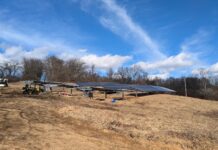(Editor’s note: The following first appeared in the Iowa State University Extension and Outreach Ag Decision Maker newsletter, February 2016.)
By William Edwards, Retired Iowa State economist
Lower grain and livestock prices decreased farm profits in 2015 and working capital reserves are disappearing. This situation is likely to persist through the upcoming year, so some belt-tightening will be in order for many producers.
Machinery and equipment costs are one major area where some adjustments can be made. Data from the Iowa Farm Business Association records show that high profit farms spent only $152 per acre on machinery costs in 2014 while low profit farms spent $189 per acre.
Likewise, high profit farms had an investment in machinery of $435 per acre compared to $592 per acre for low profit farms.
Here are five alternatives for reducing costs during the coming year:
Lease rather than buy
An operating lease allows producers to use equipment for a period of time, usually 3-5 years, for a fixed annual or monthly payment. At the end of the lease period the producer can return the equipment to the dealer or lease company, or exercise a purchase option to acquire it at roughly its fair market value.
Lease payments are typically around 18 percent to 23 percent of the new value of a machine, and are often lower than payments on a loan to buy the same machine would be.
For example, for a new tractor with a purchase price of $200,000, the annual lease payment might be about $40,000. If the same tractor were 100 percent financed for four years at an interest rate of 6 percent, the payment would be $57,718 per year, almost $18,000 more.
Of course, when the lease expires the farmer has no equipment or equity to show for it. Conversely, when a purchase loan is repaid the farmer has full ownership and no more payments until time to trade again.
Leasing can be advantageous in times of below average revenue and the payments do not show up as liabilities on the balance sheet. However, the leased equipment cannot be listed as an asset and the payments still create a cash-flow obligation.
Custom hiring
Smaller cash grain operations can lower costs by custom hiring some operations done rather than owning a full line of machinery. Cash costs are known in advance and you pay only for the number of acres actually planted or harvested.
Moreover, custom operators often have newer equipment and are more skilled at operating it. Current studies have shown that a cash grain operation needs to harvest about 1,200 acres or more per year for owning a new combine to be cheaper than custom hiring the harvest.
The down side to custom hiring, of course, is some loss of control over when and how work is completed. A balance needs to be struck between economics and convenience. Farmers with smaller acreages should also consider doing custom work for other operators.
Adding more acres lowers fixed costs per acre and adds a low-risk source of income. In the corn belt, cash grain farmers can count on about 25 field days for completing tillage and harvesting each year, and about 30 field days to complete harvesting in the fall.
If extra days are available, striking a deal with another operator may benefit everyone.
Joint ownership
Some of the same advantages from custom hiring can be realized by trading the use of machinery or owning it jointly. For example, one operator may own the combine unit and another may own the harvesting heads and grain cart.
It is important to keep good records of who owns which equipment, who provides labor and who pays for fuel and repairs. At the end of the year a rental rate per acre or per hour can be calculated so that each operator pays a fair share of the costs.
A more formal arrangement can be created where some or all machinery is owned in common. This allows fuller use of the equipment resulting in lower cost per acre.
Operators who have tried joint ownership often find that two or more people working together are much more efficient than each one working independently.
More options
They often find that it is possible to own larger and newer machinery with a joint agreement. Examples of how to set up a joint ownership arrangement and allocate costs fairly can be found in Ag Decision Maker File A3-37, Farm Machinery Joint Ventures.
If jointly owned machinery is financed through a bank or dealer, it is important that the lender fully understands how the assets are owned and who has collateral rights.
Leasing rather than owning may be more simple for joint agreements. Purchasing used machinery Limited capital can be stretched and liabilities reduced by investing in used machinery rather than new items.
A quick look at some used machinery websites show that a full line of 4-year-old equipment could be assembled for about two-thirds the cost of a new set.
Many operators traded machinery in recent years when cash incomes were good, so inventories of used units are higher than usual. Asking prices vary widely, so a little time spent shopping online could produce significant savings. Used machinery carries a higher risk of breakdowns and repair costs, so having the tools, facilities and skills to maintain equipment is important.
Extending ownership life
Similar to investing in used machinery, keeping machinery longer avoids the high depreciation and interest costs incurred during the first year or two of its useful life. It helps lower the amount of intermediate debt shown on the farm balance sheet and avoids high down payments for new equipment. This is especially true for machinery that does not have a high level of annual use.
Saving a little bit of cost here and a little bit there will add up over time. Your lender will smile more, and the drain on your working capital won’t be as severe.













